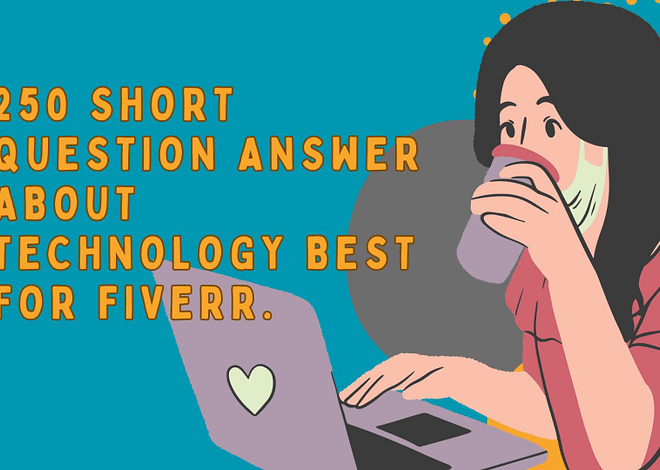
How maximize Earnings with Amazon Kindle
How maximize Earnings with Amazon Kindle: Amazon Kindle is a pioneering line of e-readers developed by the global e-commerce giant Amazon. Launched in 2007, Kindle devices have transformed how individuals consume literature by providing a digital platform for books, magazines, newspapers, and audiobooks.
Designed with E Ink technology, Kindle offers a paper-like reading experience, reducing eye strain and enhancing readability. With various models catering to diverse preferences, Kindle has become synonymous with accessible and portable digital reading, empowering users to carry an extensive library in the palm of their hands. Whether the entry-level Kindle, the popular Kindle Paperwhite, or the premium Kindle Oasis, Amazon Kindle continues to shape the future of reading in the digital age.
How maximize Earnings with Amazon Kindle
Table of Contents
How Kindle works:
Amazon Kindle operates by utilizing cutting-edge E Ink technology, replicating traditional paper’s appearance for a comfortable and eye-friendly reading experience. The Kindle device connects wirelessly to the internet, allowing users to seamlessly download digital content directly to their devices, eliminating the need for a computer. Best earning source.
With its diverse range of models, like the entry-level Kindle, the popular Kindle Paperwhite, and the premium Kindle Oasis, users can choose a device that suits their preferences and budget. Kindle’s intuitive software, accessible via the Kindle Store and apps for various platforms, ensures users can easily purchase, download, and enjoy a vast selection of eBooks, audiobooks, magazines, and newspapers.
The platform also features functionalities like Whisper sync, allowing users to synchronize their reading progress effortlessly across multiple devices. In essence, Kindle has revolutionized reading by offering a portable and extensive digital library, making literature accessible anytime, anywhere.

Kindle Policies:
Amazon Kindle, the renowned e-reader platform, adheres to policies to ensure a secure, user-friendly, and enjoyable digital reading experience. Here’s a comprehensive look at Kindle’s key policies:
- Digital Rights Management (DRM):
- Kindle books are often protected by Digital Rights Management (DRM) to prevent unauthorized sharing and distribution.
- DRM ensures that purchased content is accessible only on authorized Kindle devices and apps linked to the user’s Amazon account.
- Kindle Direct Publishing (KDP):
- Kindle Direct Publishing is Amazon’s platform that enables authors to self-publish their books for Kindle.
- Authors retain control over their work, set pricing, and receive royalties for sales.
- Content Guidelines:
- Kindle maintains content guidelines to ensure published material complies with legal and community standards.
- Any content violating these guidelines, such as offensive material or intellectual property infringement, may be subject to removal.
- Refund Policy:
- Amazon Kindle has a customer-friendly refund policy. If a customer accidentally purchases an eBook or is dissatisfied with the content, they can request a refund within a specific timeframe.
- Whisper sync:
- Whisper sync is a feature that syncs reading progress, bookmarks, and notes across Kindle devices and apps.
- It allows users to seamlessly switch between devices without losing their place in the book.
- Device Policies:
- Kindle devices come with standard warranties, and Amazon supports technical issues.
- Users are encouraged to register their devices to access customer support and manage content effectively.
- Parental Controls:
- Kindle offers robust parental controls, allowing parents to restrict access to certain features and content for child accounts.
- Terms of Use:
- Users must adhere to Amazon’s Terms of Use, outlining the rules and regulations governing using Kindle services and devices.
In summary, Amazon Kindle prioritizes user satisfaction, content integrity, and adherence to legal standards through its DRM, KDP, content guidelines, refund policy, Whisper sync feature, device policies, parental controls, and terms of use. Collectively, these policies contribute to a secure and enjoyable reading environment for Kindle users.
Kindle Format and Formatting Software:
Amazon Kindle uses a proprietary eBook format known as AZW, which was developed by Amazon. This format is optimized for Kindle devices and ensures a seamless reading experience for users. Additionally, Kindle supports other standard eBook formats, such as MOBI and PRC. Understanding the specifics of these formats is crucial for authors and publishers looking to publish their content on the Kindle platform.
AZW Format:
- Description: AZW, short for Amazon Word, is Amazon’s exclusive eBook format designed to work seamlessly with Kindle devices. It supports features like text-to-speech, bookmarks, and annotations, providing a rich reading experience.
- Compatibility: AZW files are compatible with all Kindle devices, including Kindle e-readers and Kindle apps on various platforms.
MOBI and PRC Formats:
- Description: MOBI (Mobi pocket) and PRC (Palm Resource Code) are standard eBook formats compatible with Kindle. While MOBI is a popular eBook format, PRC is an older format that Kindle devices still support.
- Compatibility: Both MOBI and PRC files are compatible with Kindle devices, making them viable options for authors and publishers.
Formatting Software for Kindle:
- Kindle Create:
- Description: Developed by Amazon, Kindle Create is a user-friendly formatting tool that assists authors in preparing their manuscripts for Kindle publishing. It allows for customized fonts, styles, and images, ensuring a polished eBook.
- Features: Supports the creation of interactive eBooks, including features like drop caps and image pop-ups.
- Calibre:
- Description: Calibre is a free and open-source eBook management tool that can convert various document formats into Kindle-compatible formats. It provides advanced formatting options for users with a good understanding of eBook structure.
- Features: Converts and manages eBooks in various formats, including AZW, MOBI, and PRC.
- Scrivener:
- Description: Scrivener is a comprehensive writing and formatting tool that supports the creation of eBooks compatible with Kindle. It is popular among authors for its robust organizational features.
- Features: Allows authors to structure and format their manuscripts seamlessly before exporting them in Kindle-compatible formats.
Understanding Kindle formats and utilizing suitable formatting software is essential for authors and publishers to ensure their content is presented effectively on the Kindle platform. Kindle Create, Calibre, and Scrivener are powerful tools that cater to different formatting needs, providing authors with flexibility and control over the presentation of their work on Kindle devices.
The Kindle Publishing Platform:
The Kindle Publishing Platform is a dynamic and user-friendly avenue for authors and publishers to share their literary creations with a global audience. Developed by Amazon, this platform provides a comprehensive set of tools and resources, empowering individuals to independently publish and distribute their eBooks to Kindle users worldwide.
Key Features:
- Kindle Direct Publishing (KDP): At the heart of the Kindle Publishing Platform is Kindle Direct Publishing (KDP). This self-publishing service allows authors to bring their works to life in digital format. With KDP, authors maintain control over the publishing process, from manuscript upload to cover design and pricing.
- Wide Distribution: Once published through KDP, eBooks become available on the Amazon Kindle Store, instantly reaching millions of readers. Authors can tap into a vast global market without the traditional barriers associated with traditional publishing.
- Royalties and Pricing Control: Authors have the flexibility to set their eBook prices and can choose between two royalty options – 35% or 70%. This flexibility allows for strategic pricing decisions based on individual goals and market dynamics.
- Promotional Tools: The Kindle Publishing Platform offers promotional tools like Kindle Countdown Deals and Free Book Promotions, enabling authors to enhance visibility, attract new readers, and even boost rankings.
- Paperback Publishing: Besides digital publishing, KDP facilitates the creating and distribution of paperback copies. Authors can seamlessly offer digital and physical versions of their books to cater to different reader preferences.
- Kindle Create: To simplify the formatting process, Amazon provides Kindle Create, a user-friendly tool that assists authors in transforming their manuscripts into professional-looking eBooks compatible with Kindle devices.
- Reports and Analytics: The platform offers robust reporting and analytics tools, providing insights into sales, royalties, and reader engagement. This data empowers authors to make informed decisions to optimize their publishing strategy.
How It Works:
- Account Creation: Authors begin by creating an account on the KDP website.
- Book Setup: Authors upload their manuscript, cover design, and set book details such as title, description, and keywords.
- Pricing: Authors determine the pricing strategy and royalty option for their eBook.
- Preview and Publish: Authors use preview tools to ensure their eBook appears as intended on various Kindle devices before hitting the “Publish” button.
- Global Distribution: Once published, the eBook is available on the Amazon Kindle Store and is accessible to readers worldwide.
Advantages:
- Accessibility: The Kindle Publishing Platform democratizes publishing, making it accessible to established authors and emerging talents.
- Control and Ownership: Authors retain ownership of their work and have control over various aspects, fostering a sense of independence.
- Global Reach: Kindle’s vast user base provides unparalleled access to a global audience, increasing the discoverability of authors and their works.
In conclusion, the Kindle Publishing Platform emerges as a transformative force in the literary world, breaking down traditional barriers and opening up new possibilities for authors to share their stories with the world.
Kindle content types:
Amazon Kindle offers diverse content types, catering to varied reading preferences and interests. The platform has evolved beyond traditional eBooks, encompassing an extensive digital content library. Here’s a breakdown of the key Kindle content types:
- eBooks:
- Kindle’s primary content type, eBooks, is a digital version of printed books. They cover many genres, including fiction, non-fiction, romance, mystery, and more. Kindle’s compatibility with different eBook formats allows users to access a broad spectrum of literary works.
- Audiobooks:
- Kindle seamlessly integrates with Audible, Amazon’s audiobook platform. Users can explore a rich collection of narrated books across genres, providing an immersive auditory experience. Audiobooks are ideal for those who prefer to enjoy stories on the go or for multi-tasking readers.
- Magazines and Newspapers:
- Kindle provides a platform for accessing popular magazines and newspapers digitally. Subscribers can enjoy the convenience of reading their favorite periodicals on Kindle devices or apps, often with interactive features, making the reading experience dynamic and engaging.
- Comics and Graphic Novels:
- Kindle’s versatility extends to visual storytelling with a wide selection of comics and graphic novels. Readers can explore vibrant illustrations and compelling narratives on their Kindle devices, offering a unique reading experience for graphic literature enthusiasts.
- Textbooks and Educational Material:
- Kindle is increasingly becoming a valuable resource for students and educators. The platform offers a range of textbooks and educational materials, providing a portable and interactive learning experience. Features like note-taking and highlighting enhance the utility of Kindle for educational purposes.
- Children’s Books and Picture Books:
- Kindle caters to young readers with a rich collection of children’s and picture books. The platform’s compatibility with colorful illustrations and interactive features makes it an excellent choice for parents looking to introduce their children to the world of literature.
- Kindle Singles:
- Kindle Singles are short-form works, including essays, novellas, and short stories. These concise yet impactful pieces offer a quick and satisfying reading experience for users looking for shorter content.
In essence, Kindle’s expansive content library ensures that users can find something to suit their literary preferences, whether an immersive novel, an educational textbook, or a visually stunning graphic novel. The platform’s adaptability and diverse content types make it a leading digital reading platform.
Kindle various types of books:
Amazon Kindle offers a versatile platform for authors to publish various types of books, catering to diverse reader preferences. The primary formats available on Kindle include eBooks, Paperbacks, Hardcovers, and Series.
- eBooks:
- Format: Electronic books (eBooks) are the most common and widely supported format on Kindle.
- Attributes: eBooks are digital files users can download and read on Kindle devices or Kindle apps across platforms such as iOS, Android, PC, and Mac.
- Advantages: They are portable, accessible, and often more affordable than physical copies.
- Paperbacks:
- Format: Paperback books on Kindle are digital versions of traditional paperback books.
- Attributes: Kindle allows authors to create and sell paperback editions alongside eBooks.
- Advantages: Readers can enjoy the tactile feel of a physical book while benefiting from the convenience of Kindle.
- Hardcovers:
- Format: Hardcover books on Kindle mirror the layout and design of physical hardcover books.
- Attributes: Kindle enables the creation and distribution of hardcover editions for a premium reading experience.
- Advantages: Ideal for readers who appreciate hardcover books’ durability and aesthetic appeal.
- Series:
- Format: Kindle supports the creation of book series, allowing authors to organize and present their works as a cohesive collection.
- Attributes: Series can include multiple volumes, sequels, or related stories, offering readers a continuous narrative.
- Advantages: Authors can build a dedicated readership, and readers can follow characters and story arcs across multiple installments.
Overall, Amazon Kindle’s flexibility in accommodating various book formats empowers authors to reach a broad audience and allows readers to choose their preferred reading experience, whether it’s a digital eBook, the familiarity of a paperback, the sturdiness of a hardcover, or the continuity of a series.
What is public domain and own rights:
Public Domain on Kindle:
In the realm of Kindle, the term “public domain” refers to literary works whose copyrights have expired or were never copyrighted. These works are considered part of the public heritage; anyone can access, use, and distribute them freely.
Kindle offers an extensive collection of public domain books, ranging from classic literature to historical texts. Readers can enjoy timeless masterpieces from authors like Shakespeare, Jane Austen, and Charles Dickens without incurring any cost. This treasure trove of literature is a testament to Kindle’s commitment to providing a diverse and accessible library for users worldwide.
Own Book on Kindle:
On the other hand, “own book” on Kindle pertains to the ability of authors and independent publishers to self-publish and distribute their works through the Kindle Direct Publishing (KDP) platform. Kindle empowers writers to share their stories, knowledge, and creativity with a global audience without the traditional barriers of traditional publishing.
Authors retain control over their content, cover design, and pricing. Kindle’s user-friendly interface and wide-reaching distribution channels enable aspiring and established authors to showcase and monetize their literary creations, creating a democratized space for literary expression.
Whether indulging in the literary classics residing in the public domain or embarking on the journey of a contemporary author’s own book, Kindle offers a versatile and inclusive platform that celebrates the richness of human storytelling across generations.
In conclusion:
In conclusion, Amazon Kindle stands as a groundbreaking innovation in reading, seamlessly blending technology with the timeless joy of literature. With its E Ink technology, Kindle provides a reading experience that mirrors traditional paper, ensuring comfort during prolonged use. The wireless connectivity enables users to effortlessly access an extensive library of eBooks, magazines, and newspapers. From the budget-friendly Kindle to the premium Oasis model, there is a Kindle for every reader’s preference.
The Kindle’s user-friendly interface, accessible Kindle Store, and cross-device synchronization through Whisper sync make acquiring, organizing, and enjoying digital content a breeze. Amazon’s commitment to continuous improvement has solidified Kindle’s place as a trusted companion for book enthusiasts worldwide.
In an era where portability and convenience are paramount, Amazon Kindle not only preserves the essence of reading but enhances it for the digital age, fostering a love for literature that knows no boundaries.


